Having a personal brand offers plenty of competitive advantages whether you’re a founder of a startup, an executive, or an entrepreneur. It’s an essential piece if you want to grow your business.
When creating a strong personal brand, one of the first things you need to have is a personal brand statement.
This short piece about your personal brand has a great impact on all your branding efforts. Thus, it’s crucial that you craft an effective statement.
And what better way to inspire you than to take a look at actual personal brand statement examples of individual brands?
In this list, we rounded up 14 fantastic personal brand statement examples to get your creative juices flowing. But before we delve into the examples, first, let’s define what is a personal brand statement.
What is a Personal Brand Statement?
A personal brand statement is a 1-2 sentence that sums up your brand. It explains what you do (value), for whom do you do your work (target audience), and how do you do it (unique selling proposition).
Your statement is a distinctive part of your personal brand that is unique to you.
It should convey the value you provide to your audience in a concise way, all while maintaining a certain level of intrigue to keep people interested in what you do.
Think of it as a tagline, catchphrase, or slogan about you.
Your personal branding statement is one of the first things that people will associate with you.
It can be a defining factor whether your audience will want to learn more about you or just leave your website or social media without doing your desired action.
Thus, it is important that you take your time crafting a strong personal branding statement.
To better understand what it is and how it should look like, let’s take inspiration from some of our favorite personal brand statements below.
Personal Brand Statement Examples
1. “Be a unicorn in a sea of donkeys.” – Larry Kim
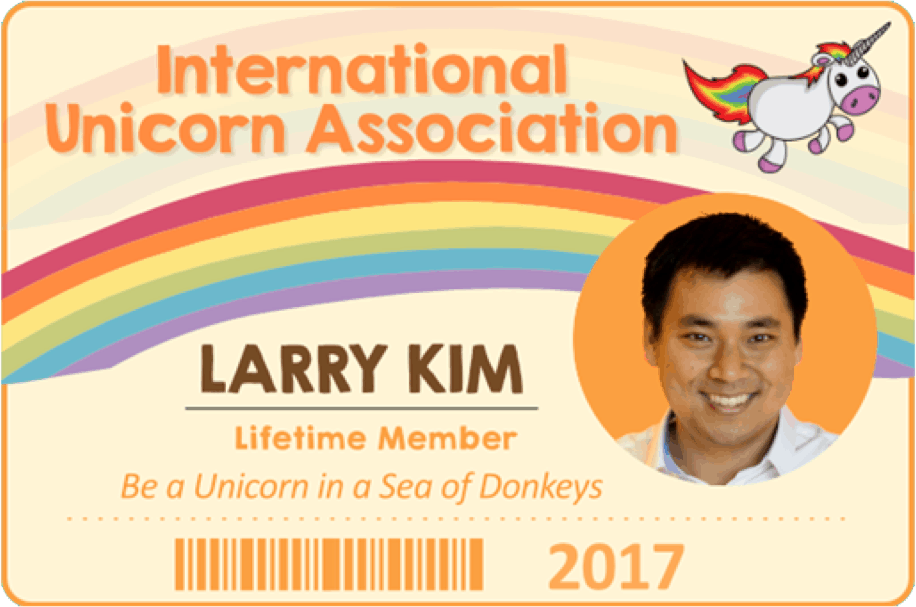
In the search marketing world, Larry Kim’s name is forever synonymous with unicorns.
The founder of Wordstream and Mobile Monkey is playful but gets his message across: “Be different.” In the marketing industry filled with companies promising you results, many fail to deliver.
But there’s always that magnificent unicorn that shows up now and then, so better ride it.
True enough, Larry’s statement being different from his peers make it a “worthy” unicorn to be included on this list.
Takeaway: Be unique. Aim for your personal brand to stand out from the crowd because that’s the whole point of creating your own brand.
2. “Empowering ridiculously good marketing.” – Ann Handley
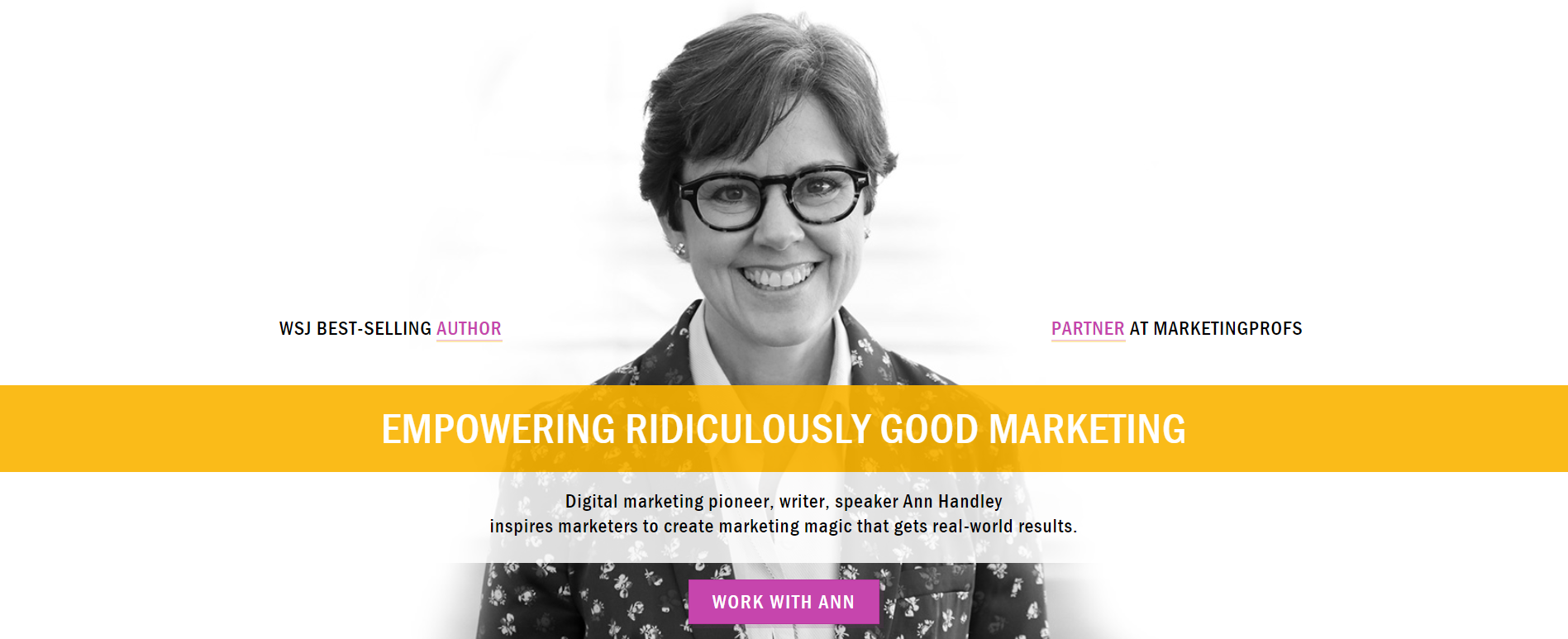
Here’s another example of being unique.
Ann Handley, WSJ best-selling author and a digital marketing pioneer, chose to describe her work casually, empowering “ridiculously good marketing.”
Not many marketers would dare craft their personal brand statements like how Ann did, and this is exactly the point why she’s on this list.
Ann delivered her statement in an unconventional way—with a casual tone—which makes her stand out.
She does not only make it clear that she’s good at her job, but she also hints at how comfortable it is working it with her.
Takeaway: Pay attention to the tone of your statement. It can dramatically affect how people will perceive your message.
3. “Create less content. (It’ll be fine! I promise!)” – Brittany Berger

Challenging popular ideas is another way to stand out. Clearly, content marketer Brittany Berger knows this, which she applied to her personal branding statement.
In digital marketing, you’d often hear experts advising brands to create more content. But Berger thinks otherwise.
She understands how exhausting thinking about filling in a content calendar.
So, rather than creating new content and getting caught up in the content creation treadmill, she promotes creating less content.
She encourages her audience to effectively use their existing content instead to get more success from less effort.
Takeaway: Swim against the tide when you have different ideas that you can actually justify.
4. “Do you want more traffic?” – Neil Patel
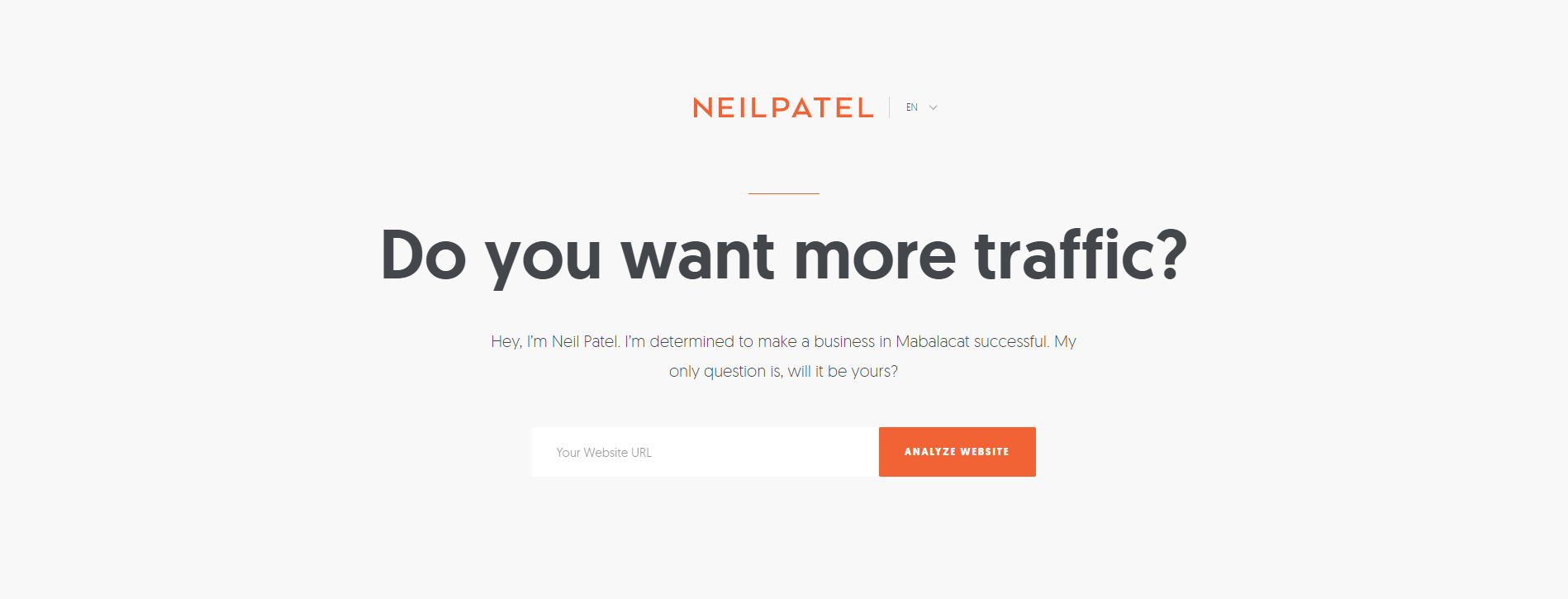
A personal branding statement doesn’t have to be a statement. It can take other forms too, like a question. Just look at how Neil Patel, one of the leading online marketers today, did his statement.
In marketing, asking questions is arguably one of the most powerful ways to pique people’s curiosity. It appeals to your audience’s desire to learn and understand, to improve and grow, and most importantly, to solve problems.
Neil’s statement may be a simple question, but it works because it appeals to his audience. This is especially true given his reputation to get his clients more traffic.
Takeaway: Spark curiosity. A personal brand statement needs to catch attention, and one way to do it is by piquing your audience’s interest.
5. “I build and grow SaaS companies.” – Sujan Patel

So far, we’ve seen unique and creative personal branding statements work their magic. But there are times a straightforward approach works too. Sujan Patel’s statement is a good example.
Sujan is a reputable marketer focusing on growing SaaS companies from the ground up. That’s what he does best, and that’s basically what he wants to tell everyone who visits his site.
His statement is direct but bold. He makes it clear that he does not only help in the growth of SaaS companies. Rather, he’s responsible for the growth of those businesses.
Takeaway: Tell what you do best and be bold about it. This kind of personal brand statement is easy to understand while immediately catches attention.
6. “Real life on a budget.” – Jessi Fearon

Jessi Fearon’s brand statement is short, but it’s clear and concise enough to send the message.
Running a personal finance and budgeting blog, Jessi aims to help people plan their budgets more effectively.
And she takes her advice from her real-life failures and successes with money to share with everyone. Thus, her personal branding statement.
Sometimes, personal brand statements don’t have to be long and overly creative. Even a simple statement has its own charm.
Takeaway: A short and clear statement works. Properly conveying the message should always be the priority.
7. “Practical help for freelance writers” – Carol Tice

Carol Tice is a six-figure freelance writer who founded the writing blog, Make A Living Writing. The tagline on her website is simple, concise, and straight to the point.
But what makes her statement great is it targets a specific audience: freelance writers.
By mentioning a specific audience, Carol’s personal brand statement makes it clear who will benefit from the “practical help” she offers.
Her choice of words also makes it apparent what she can bring in to your table. In this case, actionable tips for struggling freelance writers.
Takeaway: Make sure to target a specific audience. The best personal brand statement resonates because it’s directed to the intended audience.
8. “I believe in you… Now you must believe in yourself.” – Dave Nelson
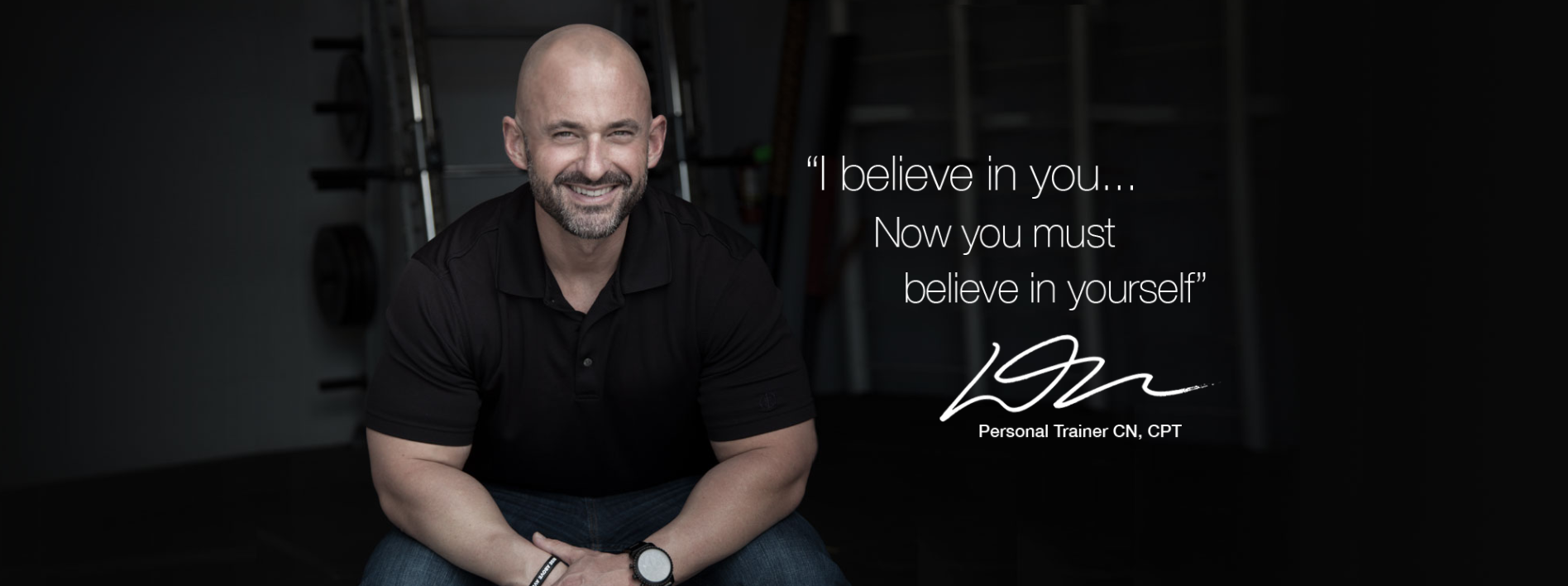
A personal branding statement isn’t always about you. It is also about your audience. So, talk about them. Talk to them.
Dave Nelson’s statement just did that. As a personal trainer who struggled with obesity, he taps into his audience’s deepest concerns: lack of self-esteem.
Then, he encourages them to believe in themselves.
Not only it is empowering, but he puts his audience’s struggles into his mind and connected with them. That is what makes his statement more compelling.
Takeaway: Talk to your audience. Your personal brand statement is your first (and can be your last) chance to connect, so make it speak with people.
9. “The world needs that special gift that only you have.” – Marie Forleo
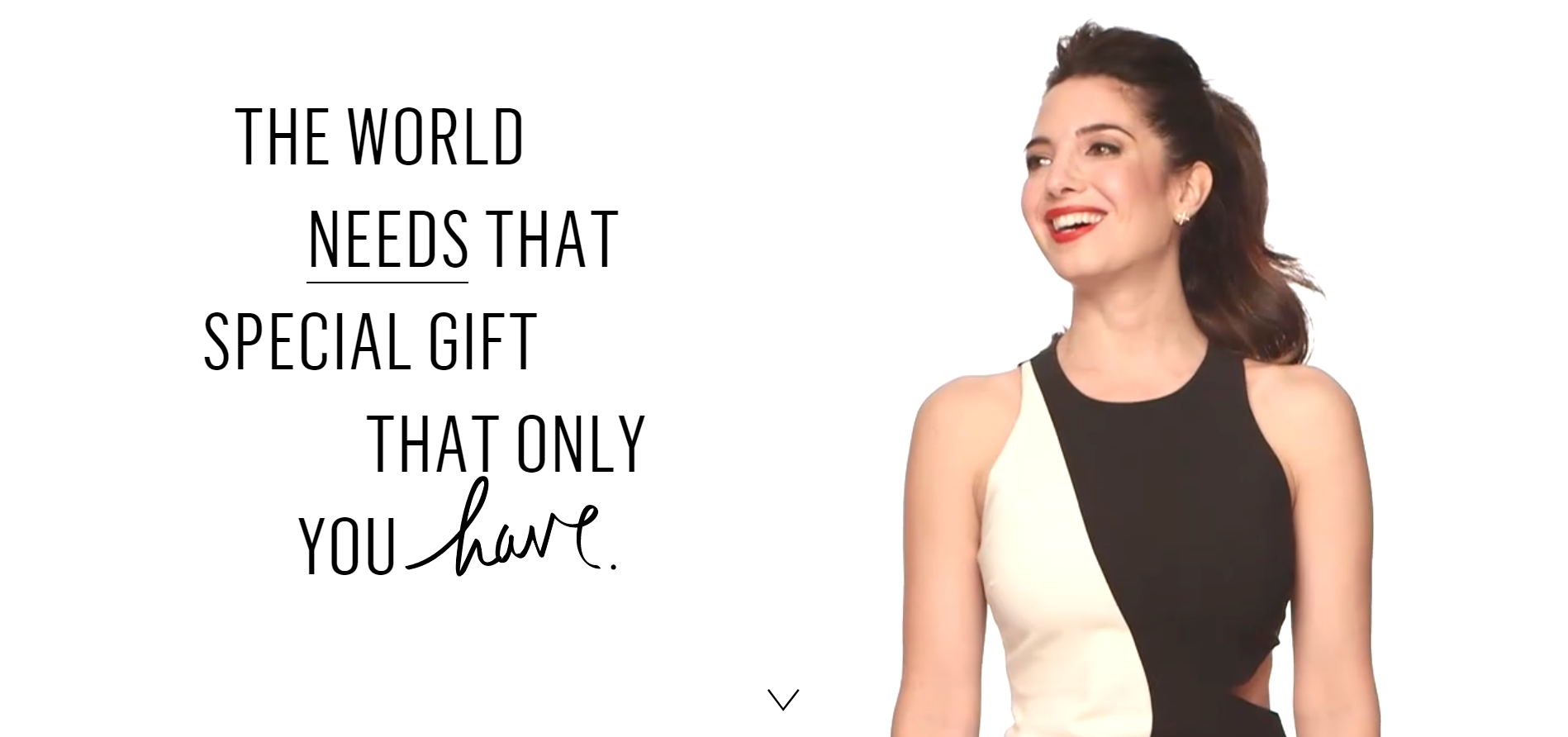
From one inspiring statement to another, Marie Forleo’s personal brand exists to encourage people to build their dreams.
Whether it’s creating a business or the life you love, you have that special gift that the world needs.
Her brand motivates people to create just about anything. And as a passionate entrepreneur, her statement is an inspirational message for aspiring entrepreneurs and creatives.
As the host of the award-winning show MarieTV, Marie sure does know how to use her wisdom to inspire her audience to become the person they most want to be.
Takeaway: Inspire your audience. Because the most successful individuals make a difference in the lives of their followers.
10. “Travel smarter, cheaper, longer. Where do you want to go?” – Nomadic Matt

In #9, we talked about the importance of involving your audience. Here’s another example to emphasize our point.
Nomadic Matt is a passionate traveler. In his blog, you’ll find tips and resources so you can travel “smarter,” “cheaper,” and “longer.” Because that’s exactly what his target audience wants to know.
Matt’s statement makes good use of his audience’s pain points to capture their attention.
Followed by a leading question as a call to action, this personal brand statement is clearly intended to appeal to his audience.
Takeaway: Address your audience’s pain points. Use these pain points to highlight your brand’s value.
11. “Be a blessing.” – Tony Robbins
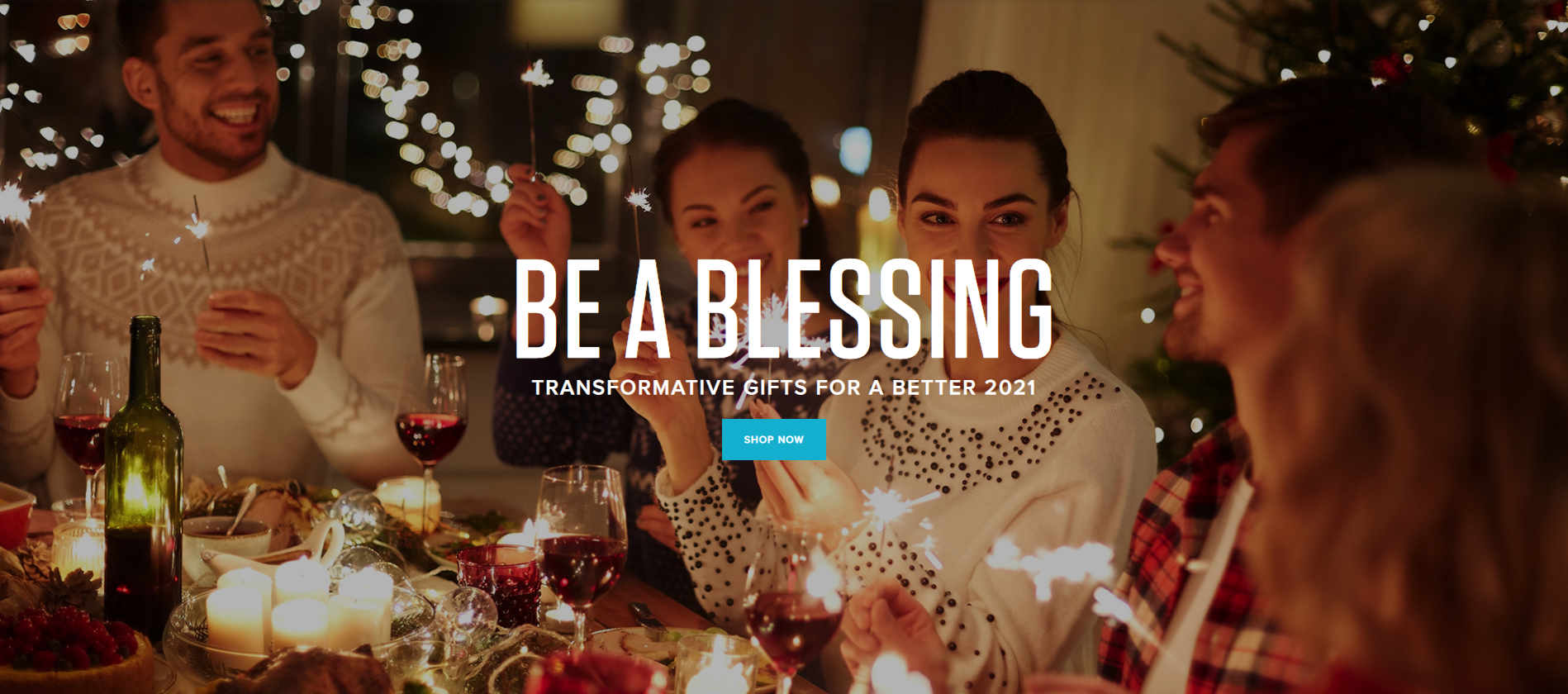
Tony Robbins is a renowned entrepreneur, life and business strategist, and NY Times author. But above all, he is a philanthropist.
And his short yet clear personal branding statement perfectly sums up what he does: help people.
As a prominent life coach, he made it his mission to help transform lives. How? He guides his audience to live purposeful lives by being a blessing to others.
This is because he believes that “The secret to life is giving,” and it translates well on all his social media profiles.
Tony’s statement is simple but clearly conveys his philanthropic message to everyone.
Takeaway: Be helpful. Personal brands sincerely aiming to help their audience creates genuine connections.
12. “50% Marketing, 50% Geek – 100% Social Business Results” – Pam Moore
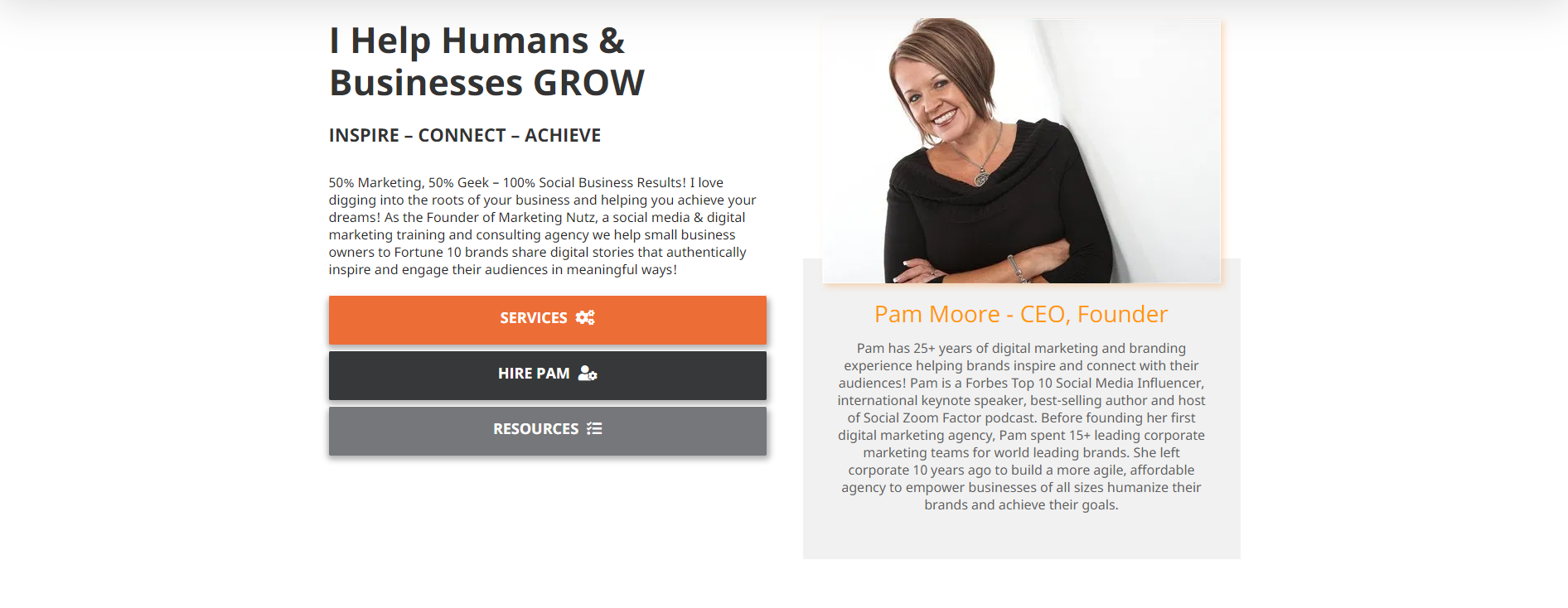
Marketing Nutz founder and CEO Pam Moore’s statement tells a lot about her character. She claims to be half geek, half marketing, which lets you know she’s a dedicated marketing consultant who can deliver results.
Also, the fun tone here hints that she’d be comfortable to work with.
This personal brand statement reflects Pam’s personality. By showing her personality in her statement, it makes her brand more relatable, authentic, and unique.
Takeaway: Show your personality. Personality creates individuality, which can make your personal branding statement unique.
13. “It’s time to unleash your epicness.” – Felicia Hatcher
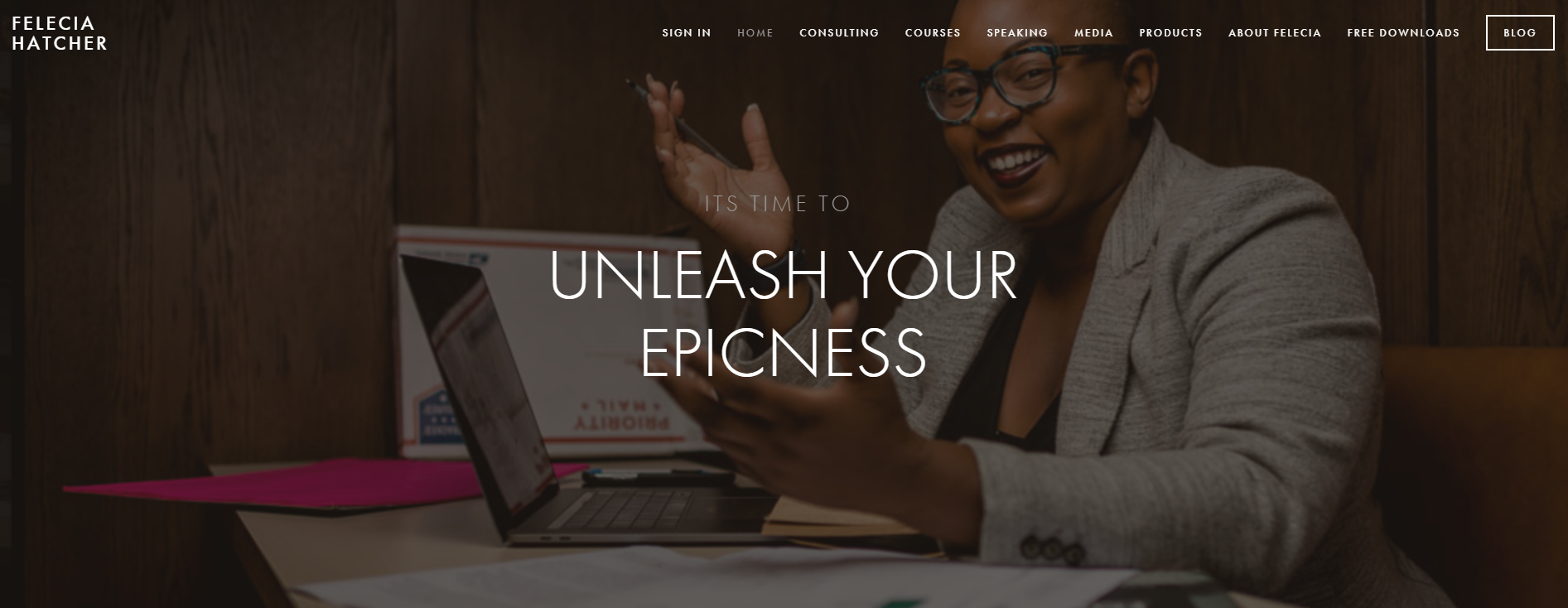
“Epicness” may not be a real word, but it made Felicia Hatcher’s brand statement a real winner that deserves a spot on this list.
Just like how Felicia’s inspirational speeches touch our emotions, her statement also taps deeply into our desires of becoming epic. Why not? You know you can be epic, too.
With her careful choice of words, her statement conveyed a more impactful and memorable message. And it’s clever how this lone word was designed to appeal to the younger generation of innovators whom she hopes to inspire.
Takeaway: Choose your words carefully. Even a single word can make a huge difference in how effective your statement will be.
14. “Learn how to scale your influence at startup speed.” – Adam Enfroy
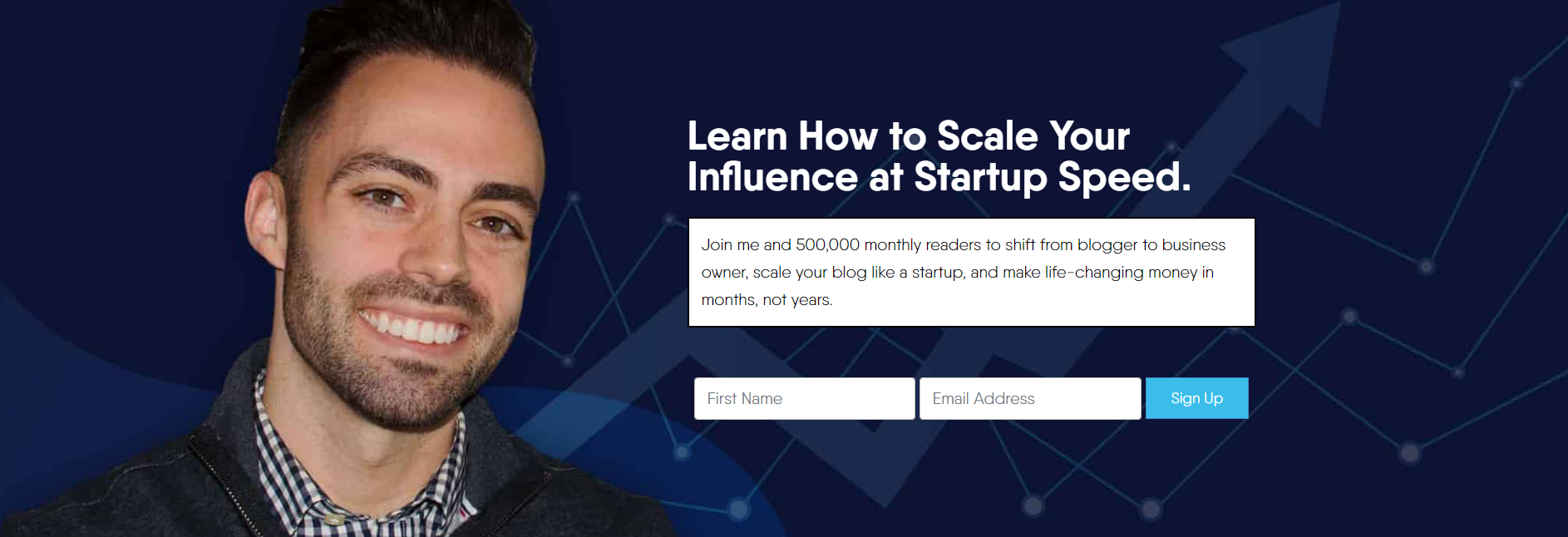
Adam Enfroy is a blogger who helps online entrepreneurs scale their influence at startup speed, which is clearly defined in his statement.
But what makes his statement even catchier is his use of numbers and social proof. Throughout his career, Adam has built a large subscriber base of 500,000 monthly readers.
He knows it is impressive, and that it will help boost his credibility. Hence, he made the smart move of mentioning those numbers on his personal branding statement as social proof.
Takeaway: Use social proof and numbers. People are likely to perform your desired action if other people are doing it.
Bonus Statement: “Super charge your company’s brand. Grow reach. Build trust. Boost sales.” – Steven J Wilson
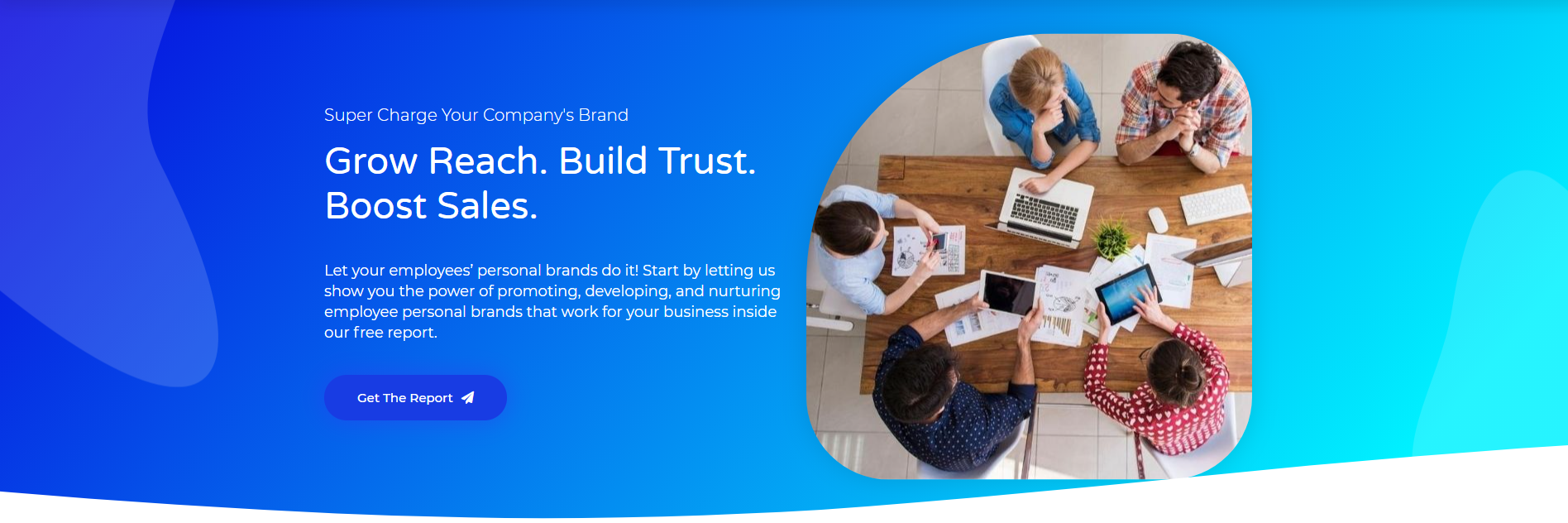
Finally, this list wouldn’t be complete without my own personal brand statement.
In this statement, I tapped on my target audience’s desire to improve their brands, i.e., grow their reach, build trust, and boost their sales. It is a simple and direct method to inform busy brand CEOs, founders, and entrepreneurs about the value I offer.
Takeaway: Offer value. The best personal brand statement clearly tells how you can help your audience.
We hope the examples above have inspired you to write your personal brand statement and got your creative juices flowing. In the next section, learn how you can craft an attention-grabbing, memorable, and engaging statement.
How to Write an Effective Personal Brand Statement
Based on these examples, we have identified key elements that make an effective personal brand statement.
Use these personal brand statement examples for leaders like yourself to answer the following questions:
- What are you an expert in? (The value you offer)
- Who are you trying to help? (Your target audience)
- What sets your personal brand apart? (Your unique selling proposition)
Personal brands struggle to create a statement because they are not being clear on the answers to the questions mentioned above. Once you have answered them, you’ll find it easier to craft your statement.
Now, let’s start writing your personal brand statement with this step-by-step guide:
Step #1: Identify your unique proposition
List down your attributes. It can be your qualities or skills that let you do your work effectively.
Then, choose the top three attributes from the list.
The goal here is to find the things that make you unique from the competition, just like how Sujan Patel and Pam Moore did in examples #5 and #12.
Step #2: Define your audience
Whom do you offer your help? It can’t be anyone. As they say, if your content is for everybody, then it is for nobody.
Hence, be clear on who your target audience is.
As we have mentioned above, half of your statement is about your audience. Address their pain points, converse with them, and highlight how you can help them.
Learn from Carol Tice, Dave Nelson, Marie Forleo, Nomadic Matt, and Tony Robbins’ personal brand statement examples.
Step #3: Inject your personality
Showing your personality makes your personal brand statement unique.
Be it in your choice of words or tone of your statement, it creates that individuality that makes you stand out from the crowd.
Ann Handley, Brittany Berger, and Felicia Hatcher crushed it in this department.
Step #4: Make it memorable
Finally, make your statement memorable.
Leave out the fluff and jargons and word your statement that is easy to remember.
Create a balance between clarity and creativity to ensure you get your message across. Just look at Larry Kim and Jessi Fearon’s personal brand statement examples above.
Best Ways To Use Your Personal Brand Statement
There are plenty of ways to use a personal brand statement.
While some are obvious, there are also some ways that can help you stand out and create memorable interactions with potential customers or employers.
Let’s explore a few options that will allow you to maximize your newly created branding statement.
Filter Opportunities
Once you have a clear idea of who you are, what you stand for, and who you serve, you can use your personal brand statement as a guide for the types of opportunities you should pursue.
It helps keep you align with your mission and limit shiny object syndrome or taking on clients that will frustrate you and never be satisfied.
Let’s say your personal brand statement is “I’m a customer service consultant who helps small businesses build better relationships with their customers.”
If you receive an opportunity to work with a business that is looking for more of a communications consultant, you can easily filter out that opportunity since it doesn’t align with your ideal client goals.
By using your personal brand statement as a filter, you can ensure that you’re staying true to yourself, your values, and your mission, while also attracting the right opportunities that will help you achieve your business or career goals.
Elevator Pitch
Use your personal brand statement as the foundation for your elevator pitch.
An elevator pitch is a short speech that explains who you are, what you do, and why you do it in 30 seconds or less.
It’s called an elevator pitch because it’s the amount of time you have to make an impression on someone during an elevator ride.
Incorporating something memorable, like your personal branding statement, in your elevator pitch can make you stand out even more.
In addition, be sure to highlight the benefits that you offer and how you can help them achieve their goals.
By doing this, you show that you’re not just focused on yourself, but you genuinely want to help them succeed, which can lead to stronger and more meaningful connections.
Personalized Gifts
You can use your personal brand statement to create personalized gifts for your clients, partners, or team members.
This personal touch can show that you value your relationship with them, leading to increased loyalty and positive word-of-mouth marketing.
To elevate your relationship, think beyond the mug or pers.
Do your research and find out what they are into and create a personalized gift that is unique to their interest.
The effort you put in here will be remembered.
Personal Branding Statement Case Study
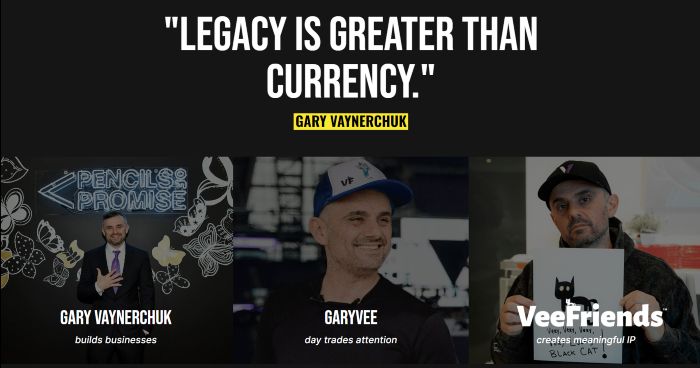
A person whose personal branding statement helped them achieve their business goals is Gary Vaynerchuk.
He is a successful entrepreneur, author, and speaker who built his personal brand around the concept of the hustle and providing value to his audience.
His personal branding statement, “Legacy is greater than currency,” reflects his core values and mission.
By building his brand around this statement, he has been able to attract a large following of entrepreneurs and marketers who are interested in his advice on building successful businesses.
Gary Vaynerchuk’s personal branding statement has helped him create a brand that is easily recognizable and trusted by his audience across many different platforms.
As of February 2023, Gary Vaynerchuk has over 10 million followers across social media platforms such as Twitter, Instagram, and LinkedIn. He has over 2 million followers on Instagram, over 3 million on LinkedIn, and over 2.5 million on Twitter. He has also built a significant presence on YouTube, with over 2 million subscribers to his channel.
Gary Vaynerchuk is listed in the Top 100 Most Followed Person on Instagram,” which encapsulates his different business ventures and achievements.
By consistently delivering value to his audience through his content, speeches, and products, he has been able to build a successful business empire that includes a media company, a wine business, and a venture capital fund.
In this digital age, using any of Gary Vee’s tactics can help you in building your career, business, or brand awareness.
Power Up Your Personal Brand Statement With These Tips
- The best personal brand statement is clear and concise, about 1-2 sentences.
- Focus on your audience’s pain points and how you can ease that pain. Always think about how you can benefit them.
- Be authentic. Only use superlatives like “leading marketer” or “best-selling author” if you are actually one.
- Make it conversational. Direct your message to the right audience.
- Use social proof and numbers when possible. This increases your credibility.
- Test your statement. Try telling it to a friend if the statement can get the message across. Ask for feedback.
- Be ready to pivot. Your statement like most things may need to be adjust to make sure you are getting your message across. If it seems like your statement is confusing or misunderstood then revise it.
- Speak Your audiences language. Use personal branding tools to help you understand what’s important and how you might need to pivot.
- Shorten the learning curve and get quicker results with a personal branding consultant.
- Just Get Started!
Now, Start Writing Your Personal Branding Statement
Do you feel like working now after seeing the leadership brand examples above? Let those creative juices flowing and start writing your first draft.
Make sure to follow the steps and tips above to craft an effective personal branding statement. Also, feel free to reach out to us if you need more help creating your statement.





